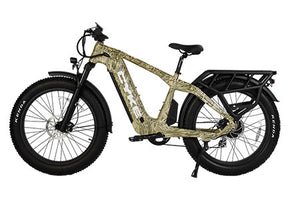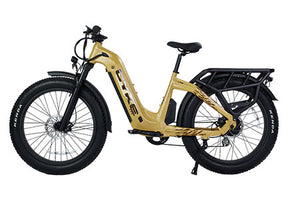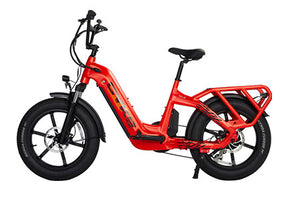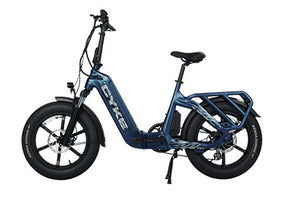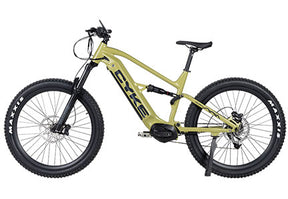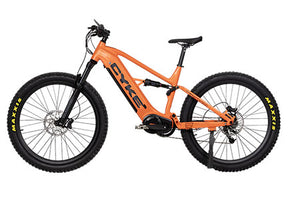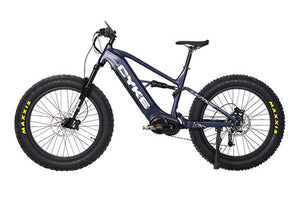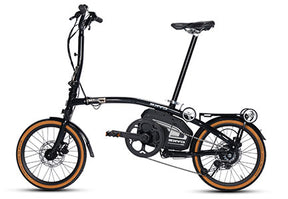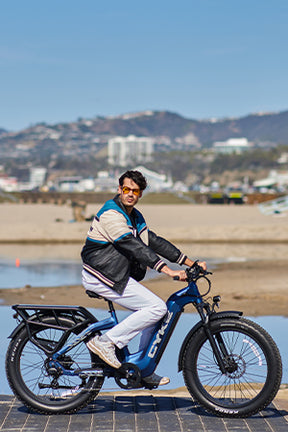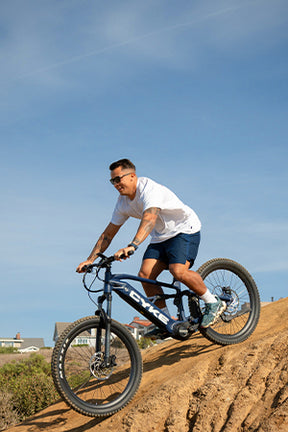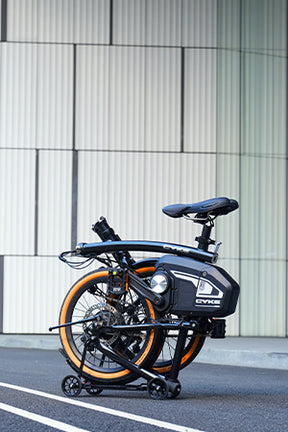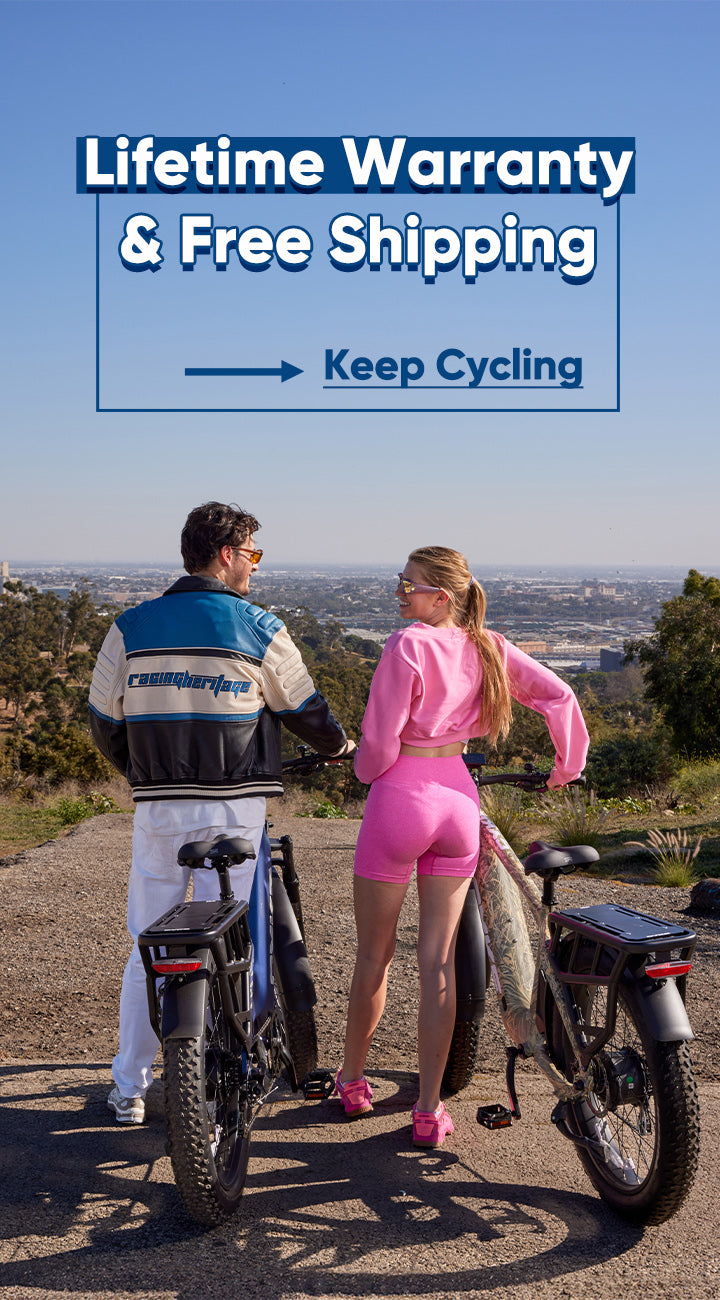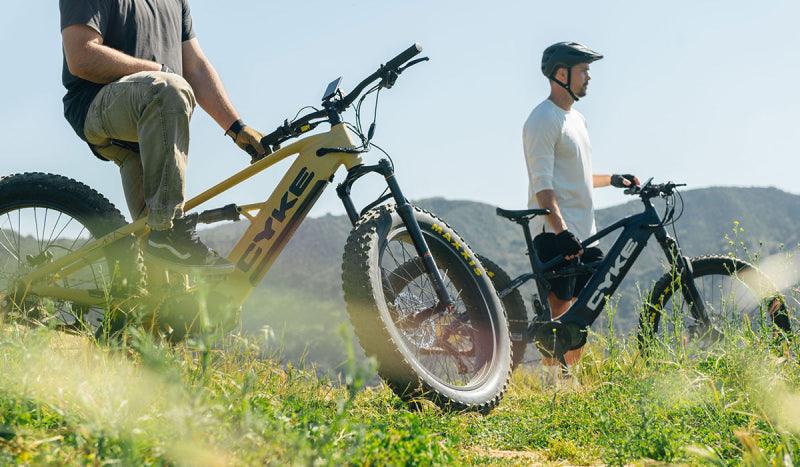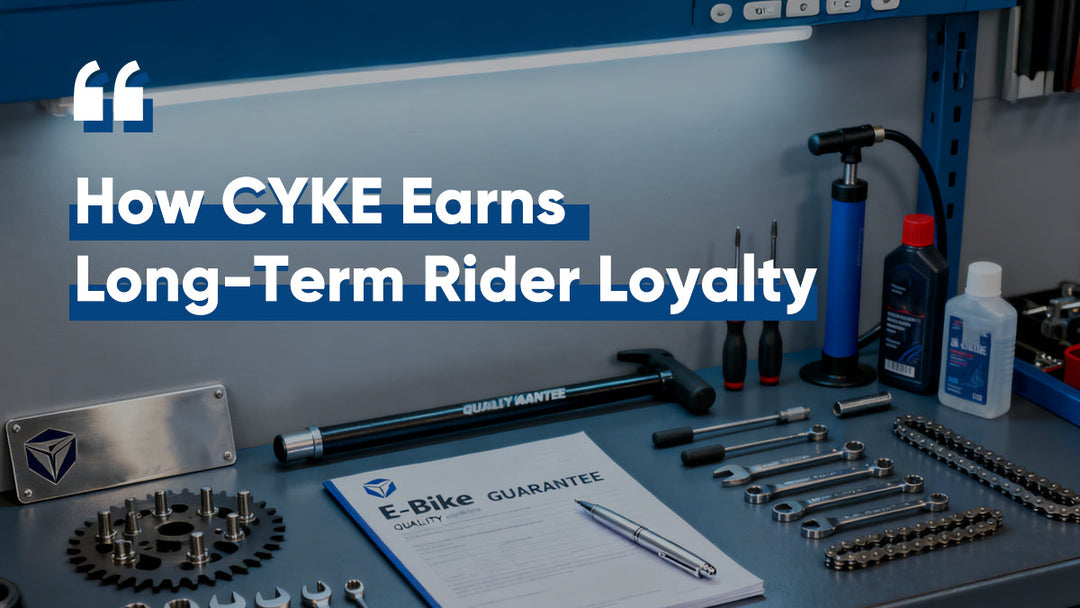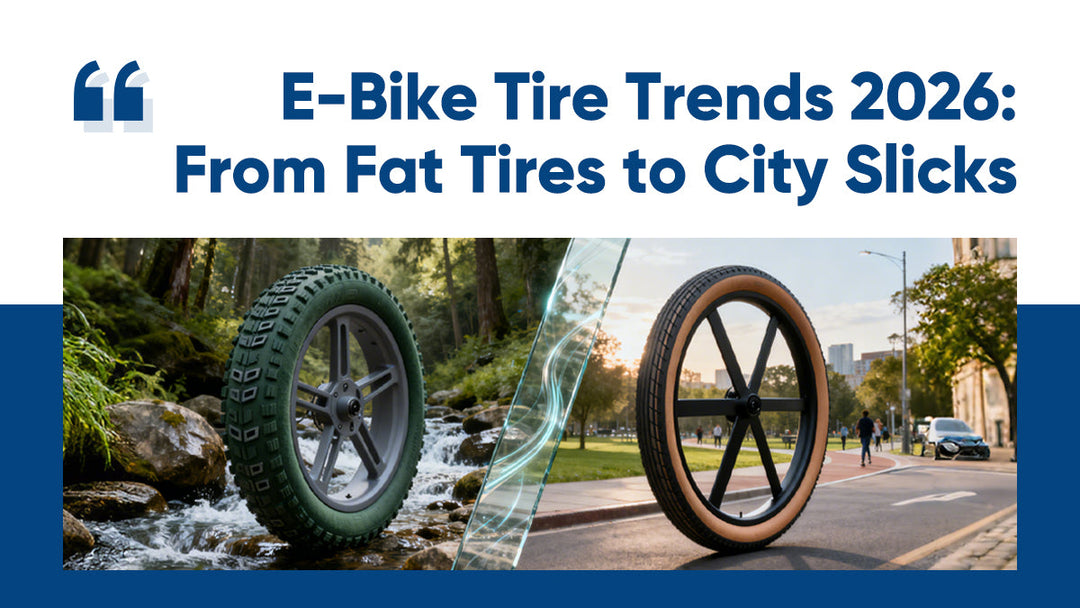Featured in this posts
eBike Weight vs. Battery Size: How to Balance Power and Portability
Ebikes are amazing, aren’t they? They let you zip around town or explore rugged trails with ease. But when it comes to choosing the right one, things can get tricky.
One big question is: How do you balance the bike's weight with the battery's size? These elements directly affect how far you can ride, how easy it is to carry your bike, and how enjoyable your overall experience will be.
In this article, we'll explore how ebike weight and battery size interact and how to find the perfect balance between power and portability for your needs.
Understanding eBike Weight
First, let’s talk about what makes an eBike heavy. A few key things add weight. Let’s dive into these factors and see how they work.
Key Factors That Add Weight
- Motor Size: A bigger motor gives you more power. That’s great for climbing hills or carrying loads. But it adds weight. For example, a 1000W motor is heavier than a 500W one.
- Battery Capacity: A Bigger ebike battery size means more range, but they are heavier too. A 960Wh battery can add more weight than a 500Wh one.
- Frame Material: The frame holds everything together. Aluminum is lighter than steel, so it’s a popular choice. But steel might be sturdier for heavy-duty use.
- Suspension System: Suspension smooths out bumpy rides. Full suspension, like on some off-road bikes, adds weight. No suspension keeps things lighter but less comfy on rough terrain.
- Tire Width: Tires matter, too. Fat tires give you more stability and grip, especially on sand or snow. But they’re heavier than slim ones.
These factors combine to determine the weight of your eBike. It’s all about trade-offs: more power or less weight?
Examples from CYKE eBike Models
If you need to carry your eBike upstairs or store it in a tight space, a heavy bike can be a hassle. Other times, you might need a strong, heavy-duty ride that can power through tough terrain. CYKE offers both.
Whether you’re looking for something light and easy to carry or a rugged bike for long, rough rides, CYKE has a model for you.
Let’s see how this plays out with CYKE’s eBikes:
- Falcon S: This one strikes a balance. It weighs 77 lbs and has a big 960Wh battery for longer trips. With full suspension, the Falcon S handles bumpy trails well and keeps the ride smooth. It’s great for anyone who wants comfort and power on off-road rides, without going too heavy.
- Cheetah: The Cheetah hunting eBike is the tough one. It weighs about 94.8 lbs and is built for serious work. The KENDA 26x4.0" fat tires grip the ground well, even on loose or rough surfaces. It can carry up to 450 lbs, so it’s perfect for hauling gear, heading into the woods, or tackling steep trails. The 960Wh battery helps you ride farther without worrying about running low on power.
- Kingfisher: This portable ebike is for city riders and people short on space. It’s lightweight at just 46.3 lbs and folds down to just 28.9 x 14.6 x 27.6 inches, easy to carry, store, or take on public transport. The tri-fold design means it fits almost anywhere. If you need something easy to move and store, this is it.
Bigger Battery, Longer Ride – But at What Cost?
Now, let’s talk about batteries. A bigger ebike battery means you can ride farther. But it also means more ebike weight. So, what’s the deal with battery size? Let’s break it down.
What Battery Size Means
Batteries are measured in watt-hours (Wh). This tells you how much energy they hold.
Here’s a simple look:
- A 500Wh battery might give you 30-50 miles.
- A 750Wh battery could stretch to 50-75 miles.
- A 960Wh battery might hit 80-100 miles.
These are estimates. Your range depends on terrain, your weight, and how much you use the motor. Flat roads? You’ll go farther. Hills? Less so.
Let’s look at a real-world example.
Say your eBike runs at 500 watts and uses a 36-volt battery. You want to ride for 2 hours straight. To figure out the battery size, you'd need:
Battery Capacity (Ah) = (500 W ÷ 36 V) × 2 h = 27.78 Ah
So, you’d need a battery with around 27.78 amp-hours (Ah) to handle that ride.
This example assumes you're using the same amount of power the whole time, which isn’t always the case in real life, but it gives you a rough idea.
When a Bigger Battery Is Worth It
So, when does extra ebike weight make sense? Here are some instances where a bigger battery shines:
- Long-Distance Rides: Planning a full day out? A 960Wh battery keeps you going without recharging.
- Off-Road Travel: Hills and rough trails consume power. In that case, a larger battery handles that extra demand.
- Carrying Gear: Hunters or campers need to haul stuff. More battery power supports the load.
- Higher Assist Levels: Love a fast, easy ride? Bigger batteries fuel those boosts.
For example, CYKE’s Cheetah has a 960Wh battery that offers up to 100 miles of range. It’s great for hunters carrying gear. The Falcon S and Falcon X also pack big batteries for off-road fans. If you need endurance, the weight is worth it.
Lightweight vs. Heavy-Duty – Choose by Use Case
So, lightweight or heavy-duty? It depends on how you’ll use your eBike. Let’s look at when each one wins.
When to Prioritize Portability
A lightweight bike is your friend in these situations:
- Urban Riders: City life means stairs or tight spaces. A lighter bike is easier to carry.
- Apartment Dwellers: No garage? A foldable, light bike fits in small spots.
- Multimodal Commuters: Bike to the train? A lighter model is simple to lift onboard.
- Frequent Lifting: Loading it into a car? Less weight saves effort.
CYKE’s Kingfisher fits here. It’s compact and foldable, perfect for city riders who need to move it around.
When to Prioritize Power and Endurance
But if you’re tackling tougher stuff, go heavy-duty:
- Off-Roaders: Rough trails need suspension, fat tires, and big batteries.
- Hunters: Hauling gear through the woods? You want power and load capacity.
- Rural Commuters: Long rides on uneven roads call for endurance.
- Heavy Riders or Haulers: More weight, yours or cargo, needs a sturdy bike.
Both the Falcon S and Cheetah shine here. They’re heavier but built for power and long hauls.
CYKE’s Approach to Power & Portability
CYKE gets it; riders are different. They’ve got options for everyone. Let’s see how they balance power and portability.
Built for the Power Rider
For those who crave strength and performance, CYKE’s powerful ebike offers these:
- Falcon S: It has a strong 1000W mid-drive motor and delivers 160 Nm of torque. The 960Wh battery gives you plenty of range. This one’s built for steep hills and rugged trails.
- Cheetah: This one’s a workhorse. It has a 750W motor and a 960Wh battery that can go up to 100 miles. It also handles up to 450 lbs. That makes it perfect for hauling gear, riding with extra weight, or heading out for longer trips.
Built for the Urban Minimalist
Need something smaller? The Kingfisher delivers:
- Compact and Foldable: It folds down to just 28.9 x 14.6 x 27.6 inches. The tri-fold design makes it super easy to tuck away, under a desk, in a closet, or even in the trunk of your car.
- Lightweight Design: Weighing only 46.3 lbs, it’s one of CYKE’s lightest bikes. The smaller 360Wh battery and 16-inch steel frame help keep it light and manageable.
- Urban-Friendly: Perfect for smooth streets and tight spaces. You won’t struggle with bulk or weight on elevators, stairs, or public transit.
Final Thoughts
So, what’s the right eBike for you? It depends on what you need.
If you prioritize portability and ease of use, a lighter, compact model like the Kingfisher is ideal. For those seeking power and endurance for off-road or long-distance rides, models like the Falcon S or Cheetah are more suitable.
Consider your lifestyle, terrain, and riding habits to choose the eBike that best fits your requirements.
